Это я, Эди
Ее образ - главное вдохновение сезона. Муза 60-х Эди Седжвик вернула себе статус it-girl номер один.
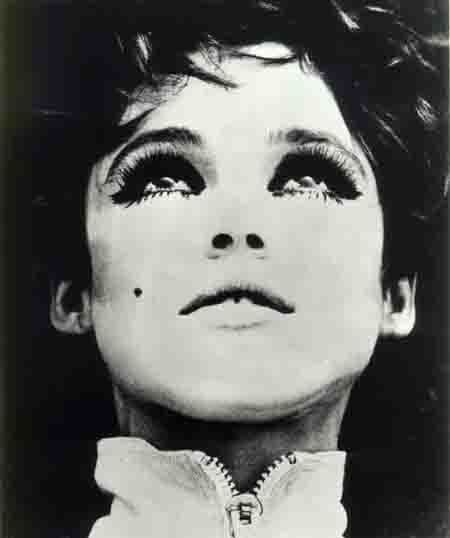
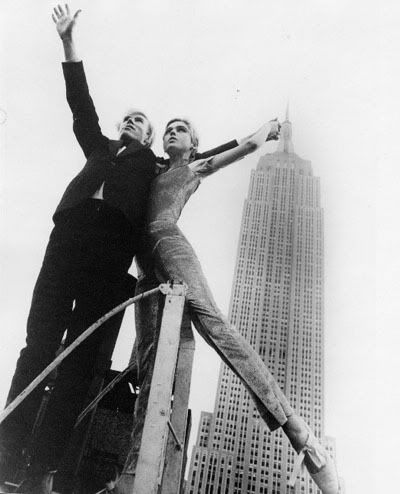
Ее таланты можно перечислить по пальцам одной руки, а ее достижения, да и жизнь в целом, если смотреть здраво, в наше целеустремленное время вызывают усмешку - пара съемок для журналов, несколько андеграундных кинокартин, не требующих особо изощренного актерского мастерства, много вечеринок и в конце концов смерть в 28 лет от передозировки. Она -эта блондинка с короткой стрижкой, it-girl Нью-Йорка бурных шестидесятых, воплощающая образ революционного времени.
Будущая муза Энди Уорхола и Боба Дилана, Эди Седжвик родилась в апреле 1943 года в Санта-Барбаре, штат Калифорния. Незадолго до рождения Эди на ранчо Седжвиков нашли нефть, и ее без того по американским меркам аристократическое семейство стало еще богаче. Отец Эди, Фрэнсис, пережил маниакально-депрессивный психоз до того, как женился на Элис Делано Де Форест, и его психиатр настоятельна рекомендовал паре не иметь детей.
Фрэнсис и Элис ухитрились нарожать восемь человек. Эди была предпоследней девочкой. К 1962 году Эди, страдающую анорексией, впервые положили в психиатрическую больницу, к концу пребывания там она забеременела и сделала аборт (об отце ребенка ничего не сообщается). В 21 год она вступила в права наследования всего, что оставила ей любимая бабушка. Она переехала в Нью-Йорк, в 14-комнатную квартиру бабушки на Парк-авеню, гоняла по городу на сером «Мерседес», закинувшись кислотой; разбив его, она стала передвигаться исключительно на лимузинах.
В январе 1965-го друг Эди привел ее на «Фабрику» Энди Уорхола. Они были очарованы друг другом с первого взгляда. Эди стала проводить на «Фабрике» почти все время. Уорхол заявил, что откроет в Седжвик «бедную богатую девочку» и сделает ее королевой «Фабрики» Энди снимал Эди в своих бесконечных фильмах («Винил», «Кухня», «Девушки из Челси» и другие), они вместе блистали в обществе; в этот период Эди часто называла себя «миссис Уорхол». Они были вместе немногим больше года; некоронованные король и королева Манхэттена, с созвучными именами, одинаково подстриженными обесцвеченными волосами, в одинаковой серебристой одежде.
Союз прохимиченной богатой блондинки и феноменального чешского интеллигента стал квинтэссенцией новой культуры, символом поп-арта. Если сейчас компании рвут контракты с моделью, когда ее застают с белым порошком и свернутой в трубочку купюрой, то наркотическая зависимость Седжвик скорее прибавляла ее образу модной «богемности».
Легендарная Диана Вриланд, тогда редактор американского Harper's Bazaar, носила Эди на руках; она говорила, что «у наркоманов чудесная кожа». Эди стала иконой стиля - короткие платья, черные колготки, длинные серьги, подведенные глаза и короткие белые волосы копировали тысячи девушек, желавших стать ближе к искусству.
Как раз в то время в жизни «Фабрики» появляется группа The Velvet Underground, и Лу Рид по просьбе Уорхола пишет песню об Эди - Femme Fatale; ее поет Нико. Но Эди интересует несколько другая музыка: в начале 1966-го она познакомилась с Бобом Диланом - и влюбилась в него. По общему мнению, песни Just Like AWoman и Leopard-Skin Pill-Box Hat были написаны для нее. Дилан обещает сделать из нее большую певицу и актрису, если она перестанет быть «придатком» Уорхола. Эди объявила Уорхолу, что она уходит с «Фабрики»; это событие было отмечено громкой публичной ссорой в ресторане. Кстати, очевидцы высказывали предположение, что Уорхол и его «Фабрика» во многом существовали на деньги славного семейства Седжвик. Так или иначе, но в 1966-м Эди Седжвик оставила Энди Уорхола - и это стало не концом «Фабрики», а началом конца самой Эди.
К концу того года она плотно сидела на кокаине и героине. Наследство было практически растрачено, и она начала таскать из дому и продавать фамильный антиквариат. В октябре 1966-го Эди заснула в квартире с зажженными свечами - квартира сгорела, она сама попала в больницу с ожогами спины, рук и ног. Возвращаться ей было некуда, и из больницы она поехала в отель «Челси» к другу Дилана и своему любовнику Бобу Ньюуирту, от которого зависела, как от наркотиков. Когда Ньюуирт ее бросил, Эди спала с кем попало за героин, приходила на «Фабрику» к Уорхолу просить денег, попадала в тюрьму, все больше времени проводила в лечебницах.
К 1968-му почти не могла говорить; увидев брата, приняла его за своего любовника. В июле 1971-го Эди вышла замуж за товарища по реабилитационной клинике Майкла Поста; через пару месяцев она появилась на фэшн-показе во всем блеске, покрутилась перед камерами; придя домой приняла из рук мужа положенную порцию снотворного легла спать. Утром коронер зафиксировал смерть от передозировки.
Сейчас, гладя на фотографии этой очень худой, одетой во все черное девушки (Эди всю жизнь страдала анорексией), уже трудно поверить, что именно она была «party goddess», главной музой свингующих шестидесятых. Ведь главный талант Эди оказался эфемерного свойства: «она была светом, вдыхала в окружающих ее людей жизнь», как говорил кто-то из ее «фабричных» друзей. Джордж Хикенлупер, режиссер фильма «Девушка с «Фабрики», где Эди играет Сиенна Миллер, говорит, что для него история Эдди - это типичная «американская трагедия»: «У американцев вырос такой культ знаменитостей, потому что они не находят дома достаточно любви и ищут ее во внешнем мире».
И несмотря на то, что ее судьбу не назовешь счастливой, Эди Седжвик и сегодня - героиня и объект для подражания, ведь тысячи девушек любят веселье, наркотики и людей искусства, но мало кому удается своей любовью повлиять на мир, как это сделала Эди Седжвик, девушка с «Фабрики».
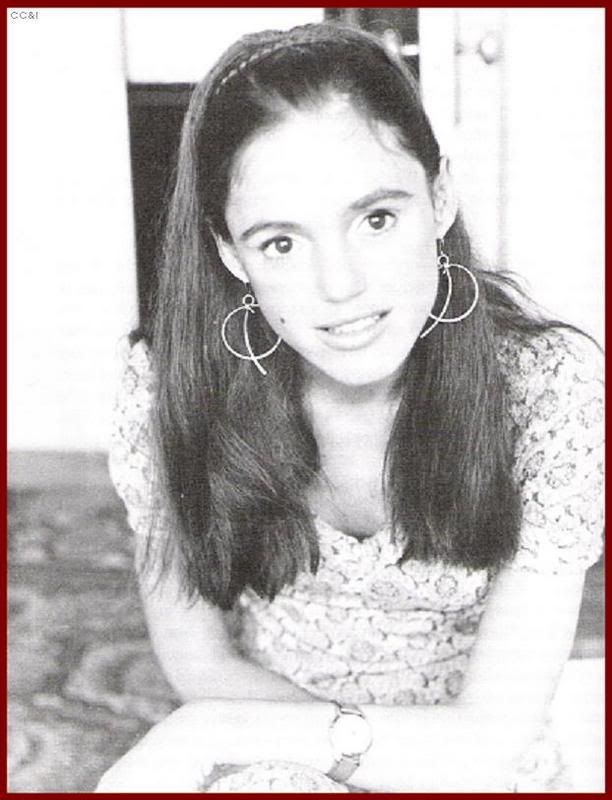
Edie at the Cottage Hospital in Santa Barbara - 1969
Jonathan Sedgwick: "People came runing up, 'Hey, did you hear Edie was busted?' How? Well, this is the way three people told me, so I believe it. When she was walking along the street, she dropped her purse and a whole bunch of reds and things fell out. A cop car pulled up, 'What ya doing?' And then the cops get the idea that she was carrying drugs on her. So they got out and threw her up against the car, her hands up over the hood, at whch point her purse spilled open again and there're whites, the reds falling everywhere! The cop who had pushed her against the car turned around and began picking up the stuff, so she wheeled around and gave him a kick in the ass man, with all the energy and hate she could. The court put Edie on probation for 5 years. After the bust she became a patient at the Cottage Hospital in Santa Barbara." - Photo courtesy of Eduardo Roman
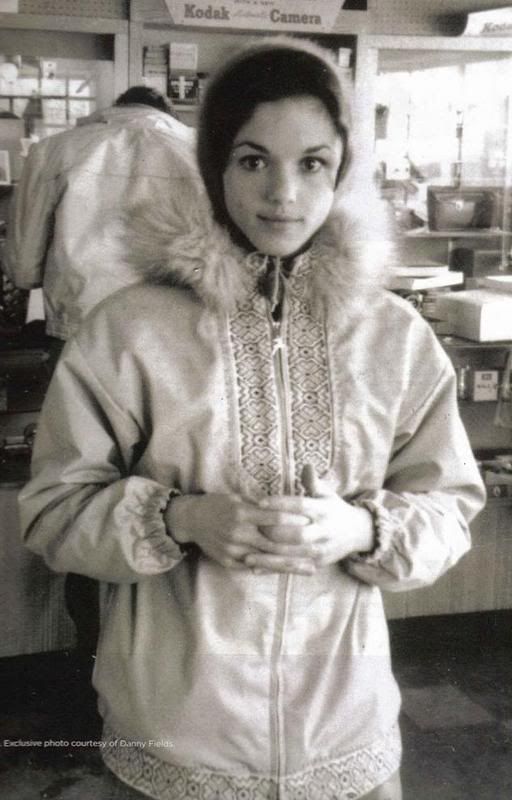
An innocent looking Edie by Danny Fields
Edie, the seventh child, was named after her father's favourite aunt, Edith Minturn Stokes, a society beauty painted by John Singer Sargent. Her sense of drama was probably inherited from her grandfather, Henry Dwight "Babbo" Sedgwick, who - when informed by his sweetheart that she would not marry him - tried to shoot himself. Fortunately, he had the wrong ammunition and the marriage duly went ahead. According to his grandson Harry Sedgwick, although Babbo wrote 30 books, mostly biographies and history, "his real career was his life... He closed one of his letters to me, 'Squeeze the flask of life to the dregs'."
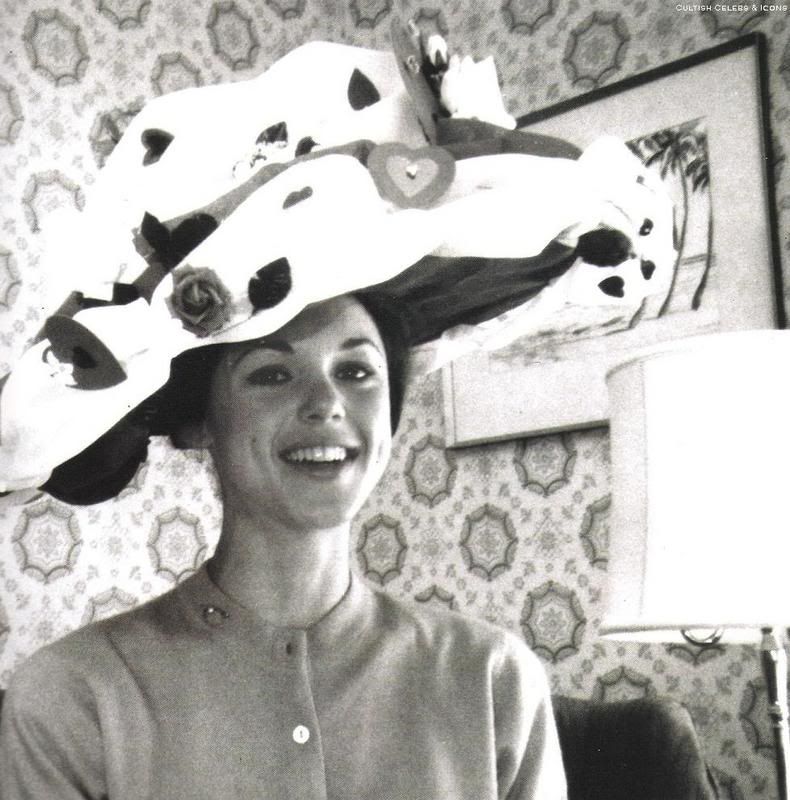
Silver Hill Rehab Center / CT - 1962
Edie was first institutionalized in the autumn of 1962 after suffering from anorexia and, like her brother, attended the Silver Hill mental hospital. Her anorexia continued until she weighed only ninety pounds at which time she was transferred to Bloomingdale, the Westchester Division of New York Hospital. Whereas Silver Hill was fairly liberal, Bloomingdale was very strict. Near the end of her stay there, she became pregnant while on a hospital pass and had to have an abortion. - Photo courtesy of the David Weisman Collecti

'Life' photo shoot in the Hamptons
Bibbe Hnsen: "I think Edie's creation of her persona, of her image, was her art form."
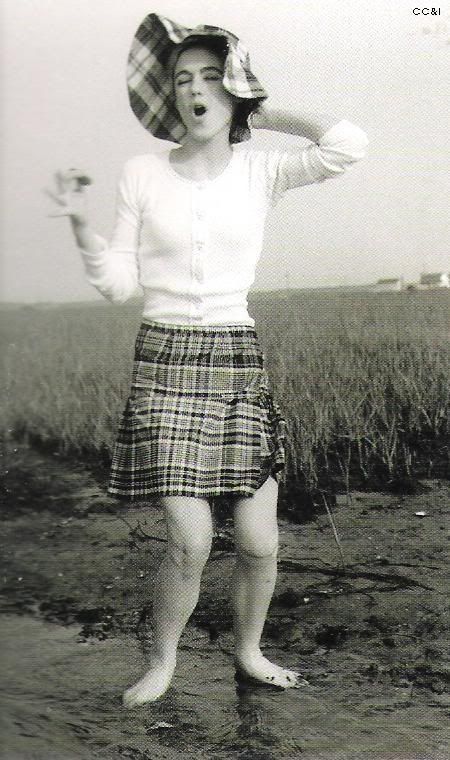
The Beach, New York
Ivy Nicholson: "That is unusual, to look like you had just walked out of a fairy tale. She had nothing human about her, just mystery."
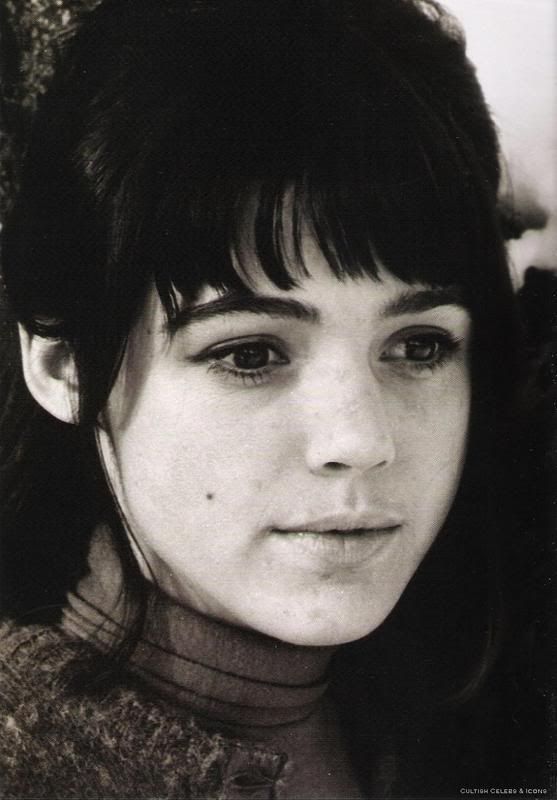
Edie Sedgwick
At 14 months old she was put on top of a horse. As a high-spirited young tomboy she fell in love with the immense open space and it's secret places, with the changes in the weather, the sensation of escape on the back of a galloping horse. As Edie's sister Suki would attest, Edie had a streak of Wuthering Heights in her. She loved violent weather, was not afraid to be alone on a mountaintop, and likewise was not afraid of her own emotional outbursts. In this way she exhibited a fierce bravery. It is an antique thing to dwell in a place where the land as far as the eye can see in every direction belongs to your father. Edie grew up in a universe of her parents' creation, isolated and rarely touched by the outside world. That univererse was troubled in many aways.
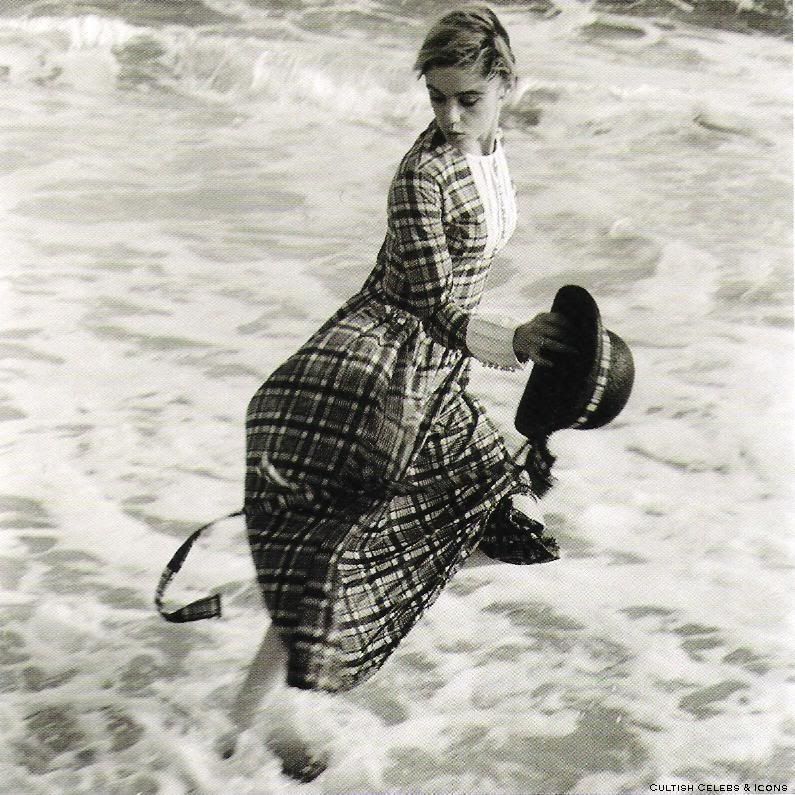
Fishers Island - 1964
John Anthony Walker: "Edie had disappeared. It was a bit spooky. Somebody said, 'We saw her go swimming.' She was nowhere in sight on this beach. 'Is that her? Way, way out?' Edie was way out... a little dark head... such a distance. She seemed to be going under and then surfacing again. I could see the shine of her legs as she dove. It was like her dancing the night before. She was playing... totally natural and involved in the element of water; she was like a porpoise. She seemed only to exist freely in atmospheres that were removed or enchanted... most people are happy swimming by the shore, but she was happy out there."
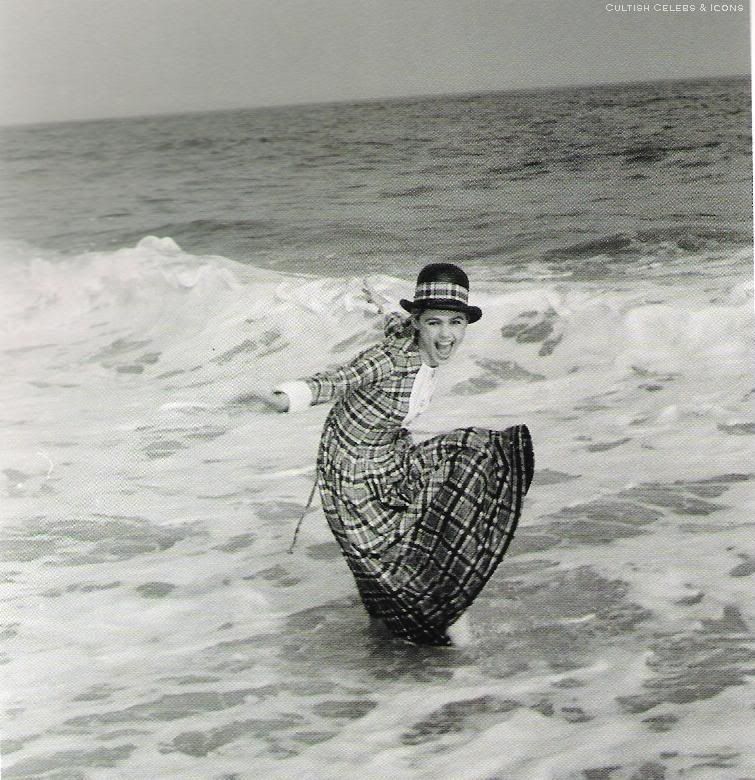
Fishers Island - 1964
Edie visited Fishers Island as a weekend guest of John Anthony Walker in the Spring of 1964. John Anthony Walker: "Edie loved parties. Edie adored parties. It was a very comfortable party. People dancing. The moon rose out of the ocean, spiraling up in the dark. It was the final touch - a nice moon rippling on the ocean and turning everything silver. Edie was very senstiive to enchantments. She broke away from the form completely and was doing these totally free dance movements. We looked out from under the marquee, and there she was on this deserted lawn. And she was cartwheeling across it, cartwheeling. I remember the music dying down as the foucs of attention shifted to her out there."

Edie's dimpled smile
In January 1965, Edie met Andy Warhol at Lester Persky's apartment. She began going to the Factory regularly in March with Chuck Wein. During one of these visits, Andy put her into Vinyl, at the last minute. She had previously made a very short appearance in Warhol's film, Horse, when she and Ondine entered the Factory toward the end of the film. Ronald Tavel (Vinyl scriptwriter): "I don't think Andy was taken in by Chuck for one minute. What he liked was his blond hair and blue eyes." Jane Holzer: "Edie was with this guy called Chuck Wein, and he had a bad vibe, a very bad vibe. Too many drugs."
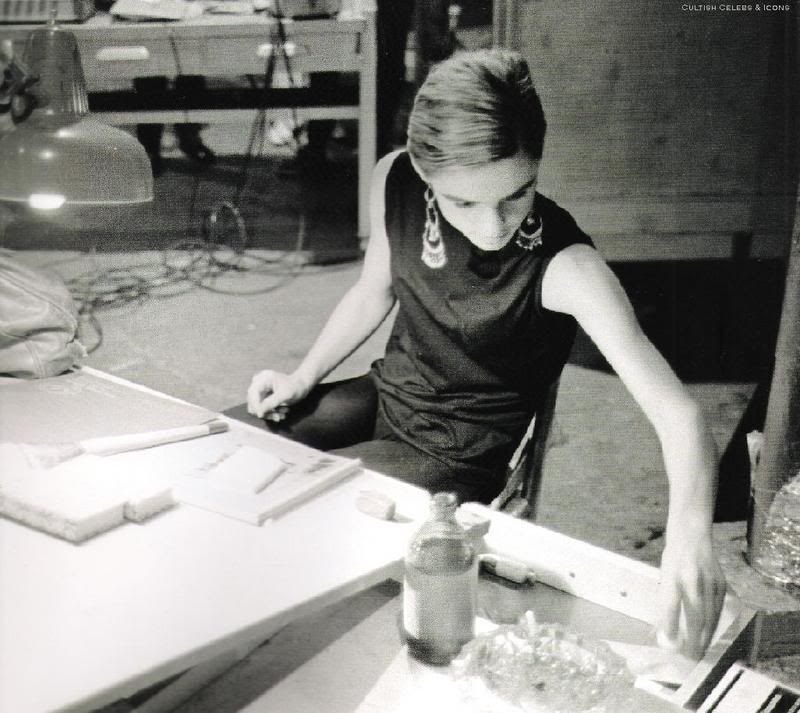
Drawing at the Factory
It was in this grandmother's apartment on the Upper East Side, at 71st and Park, where Edie first lived when she arrived in the city. Edie took dance classes, tried out for modeling gigs, and attended society events, often with her Harvard friends in tow. Tommy Goodwin, one of her other compatriots from Cambridge, Donald Lyons, Ed Hennessey, Dorothy Dean, and Danny Fields had migrated to New York as well as had Chuck Wein, with whom she was becoming even closer. She shopped and spent money with exuberance at her favorite restaurants and frequented the clubs, making a scene on their dance floors with moves all her own. When in the late fall of 1964 she moved into an apartment on East 64th, her mother arrived to furnish it in a sytle that included a beloved stuffed rhino from Abercrombie & Fitch that Edie dubbed "Wallow"
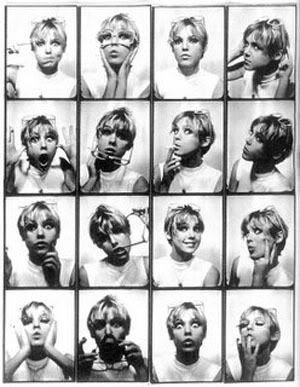
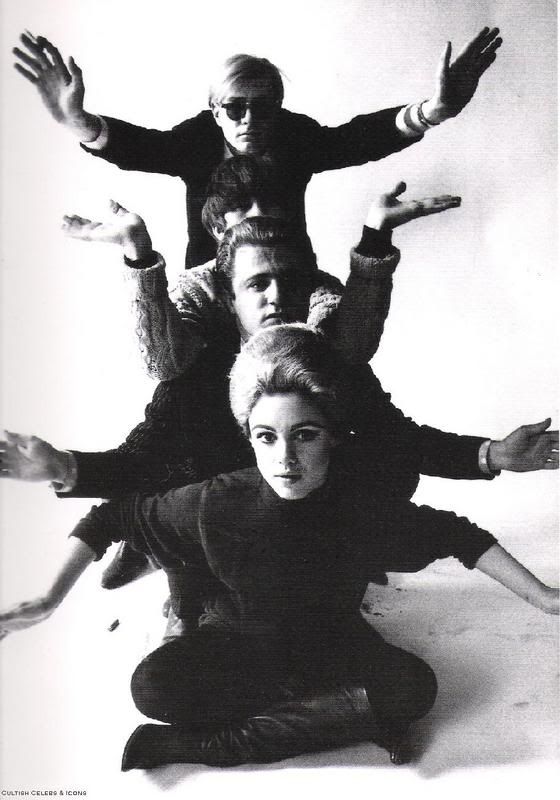
Edie, Gerard, Chuck and Andy as composite Pop creature
Sam Green became concerned also about safety. "I looked at Andy and he'd turned white with fear. It wasn't anger the crowd was expressing, it was hero worship. They wanted to touch him. It was as if Mick Jagger had been stuck on the subway and discovered by teenage girls. He was pinned against the wall. I think it was the moment that Andy knew he was a star." While the students stood below and chanted, "We want Andy and Edie! We want Andy and Edie!" the campus security police escorted the Warhol entourgae upstairs to a balcony. Edie seized the moment to address the crowd through a microphone: "Oh, I'm so glad you all came tonight, and aren't we all having a wonderful time? And isn't Andy Warhol the most wonderful arist?"
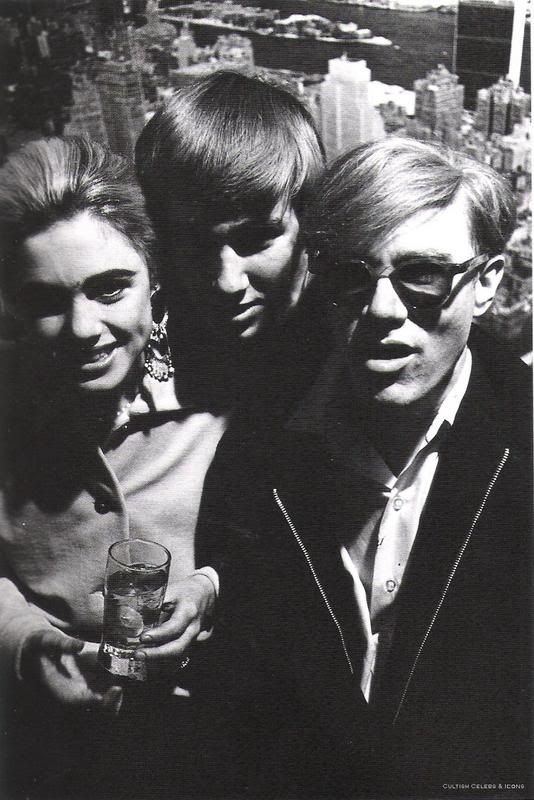
Chuck Wein & Andy at a party at the Empire State Bldg

Sharing the spotlight with the Empire State Building
The photos of Andy, Edie, Gerard and Chuck were originally part of a fashion shoot for Mademoiselle. Edie is wearing Betsey Johnson's silver jumpsuit. Betsey was an assistant editor at Mademoiselle at the time, and this was the first series of outfits she came up with, the line of clothing that launched Betsey Johnson. The Shiva pose, I think, was based on the Beatles film, Help!, which came out that year. We shot some of it in my studio, then we went up on the roof and did some pictures of Andy and Edie and Marisol with the Empire State Building in the background. At the last minute either Andy of Mademoiselle pulled the rug out on the shoot. I don't think Marisol was part of the fasion shoot; she just happened to be hanging out with Andy that day
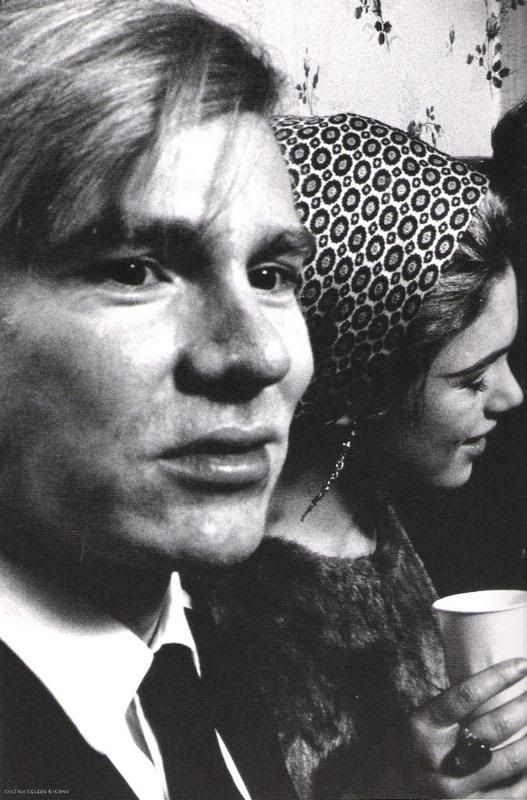
Andy and Edie at a party - 1965 April
Andy Warhol says Edie was a compulsive liar, and a bulimic, who constantly made herself vomit after eating. she rarely took a bath unless he forced her and she was heavily dependent on amphetamines and barbituates. Andy: "One night when the parties were over, I guess she didn't want to sleep with somebody, so she asked me to share a room with her. She always had to have her glass of hot milk and a cigarette in one hand. In her sleep her hands kept crawling: they couldn't sleep. I couldn't keep my eyes off them. She kept scratching them. She just had nightmares. It was really sad.
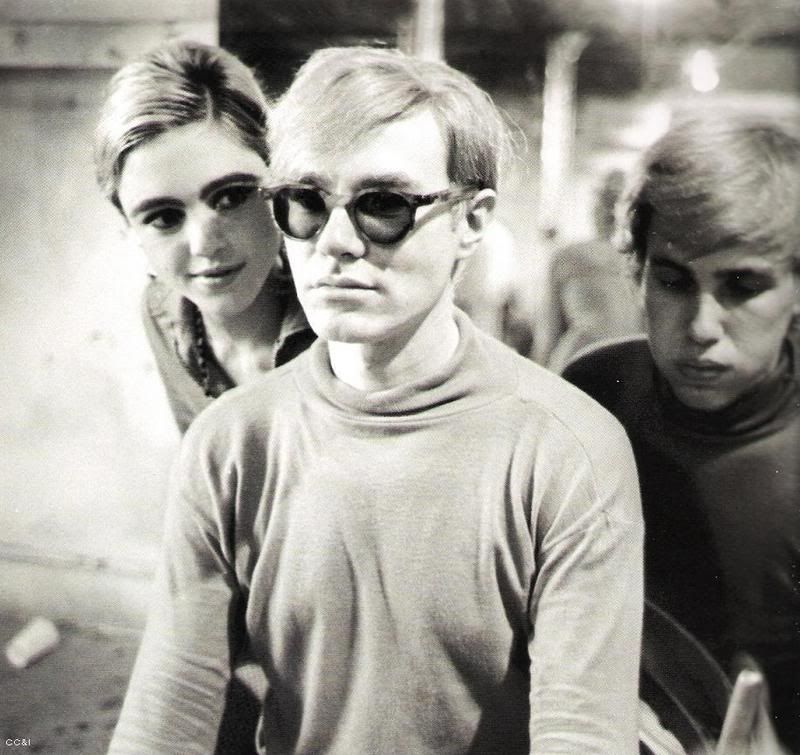
Edie, Andy and Chuck Wein
Edie, Andy and Chuck Wein Paul Morrissey: "Andy was very positive and encouraging. He probably said to her, 'You could be a star,' or whatever, but he had the vaguest idea of how to be doing that. He just went out with her every night and they got their picture in the paper. That''s not really being a star. How do you become an icon without doing anything? The idea of putting Edie in front of the camera belonged to Chuck Wein. Andy never had an idea in his head and depended on whoever was standing there to tell him what he should do. Chuck Wein said, 'Out her in front of the camera."

Edie and Andy - 1965
Edie often talked about trying to get close to Andy, a mutual friend reported, but she never could get close to him on an emotional level. Money too became an issue. Though the film seldom made a profit, and had to be subsidized by the sale of Warhol's paintings, Ede became increasingly resentful of his refusal to pay her for her work. Egged on by her friends, including Bob Dylan's right hand man, Bobby Neuwirth, with whom she soon would start a passionate affair, it was the beginning of a bitter tug of war between Warhol and Dylan's camps, with whom Dylan himself sat for two tense screen tests at the factory six months later. By then Edie herself had started the long spiral down into darkness and drug abuse that would end with her death five years later.

Edie the waif
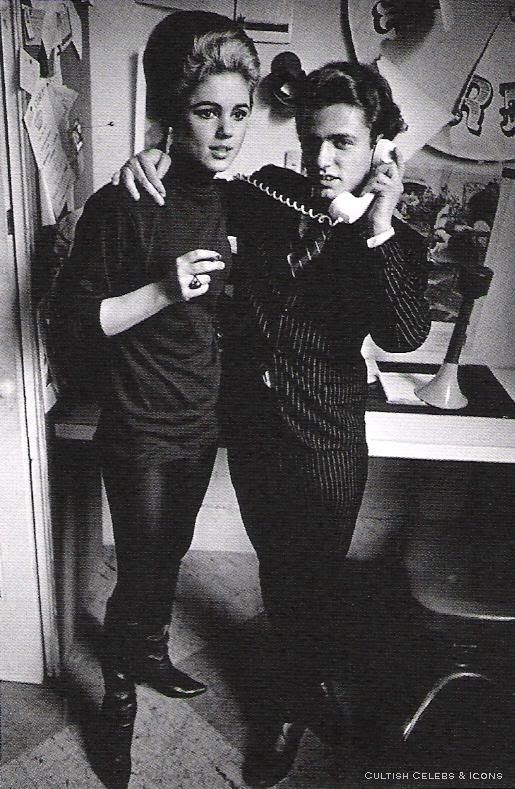
Edie was the personfication of the Poor Little Rich Girl, 65
Edie with Gerard Malanga looking beautiful. - Photo courtesy of David McCabe
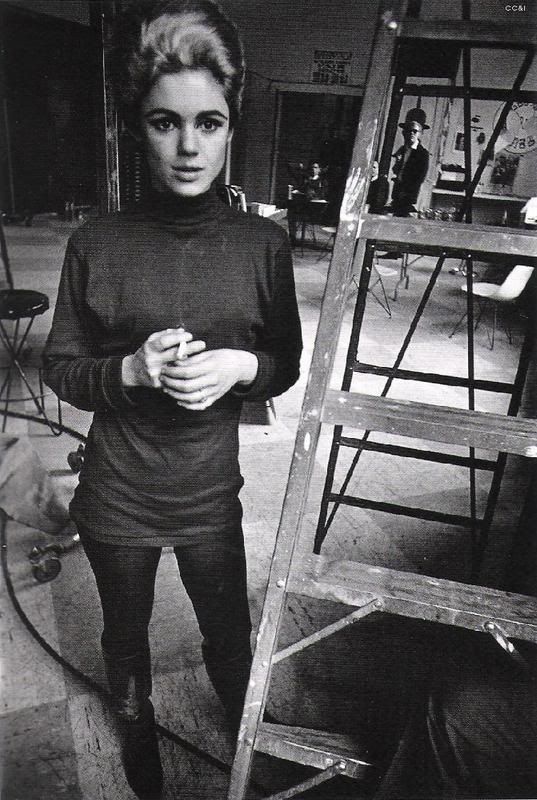
Superstar and lost little girl
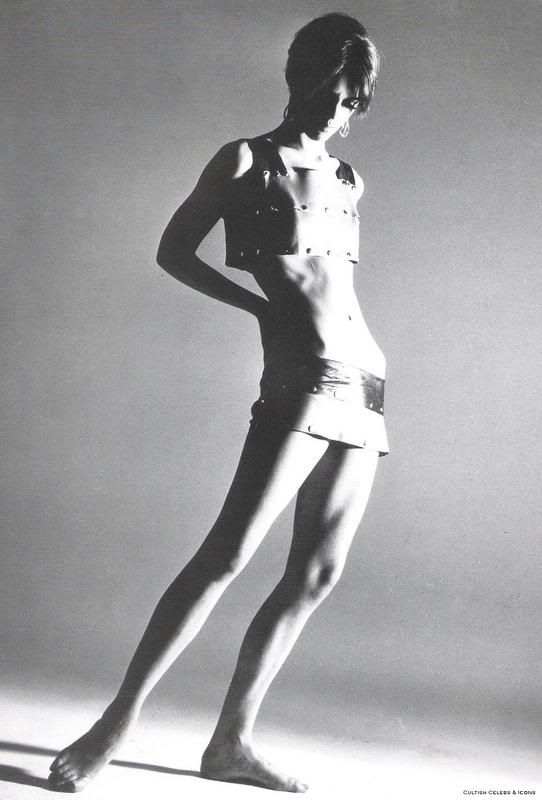
Edie wearing a Betsey Johnson dress - 1966
Betsey Johnson: "Edie was my first fitting model. Very boyish... in fact, she was the very beginning of the whole unisex trip. Backless bathing-suit dresses. I remember doing those on Edie. All the silvers, like the silver fish dress. I liked leotardic clothes - body-conscious clothes. The jersey-bodied T-shorty silver second skin. That was Edie. Her body was very important to her... I've got pictures in this album. Here's Edie in the 'skeletal'-silver outlining the collar bone, the arm, the pelvis...a kind of bone layout. I mean, that's timeless. Spacey. Timeless. Here's the 'Story of O' dress, you'll remember with the grommets up the front, the leather 'Noise' dress that had all thoese metal grommets clashing. Here's the body-composition dress. Color compositions based on the body. I have all of these clothes up at home in Connecticut. But they're wrecked. The kids in the family have been wearing them for Halloween." - Photo courtesy of Gianni Penati
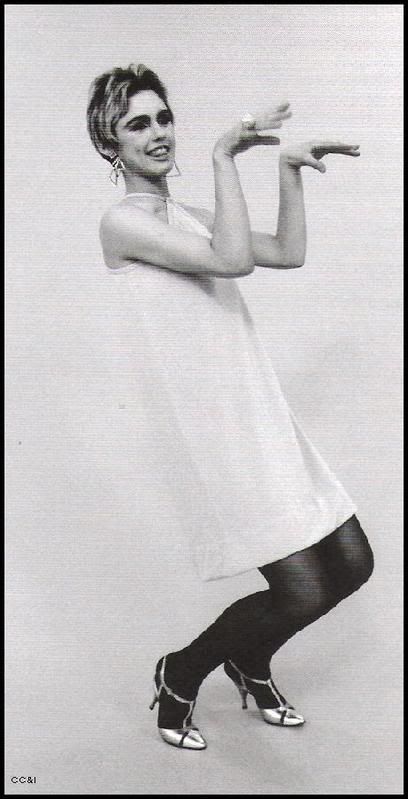
Photo shoot by Fred Eberstadt
Fred Eberstadt: "She was wonderful to watch. When she couldn't think of anything else to do she danced. She would kind of dance across the room. She danced all the time."

Fred Eberstadt fashion shoot for 'Life' magazine
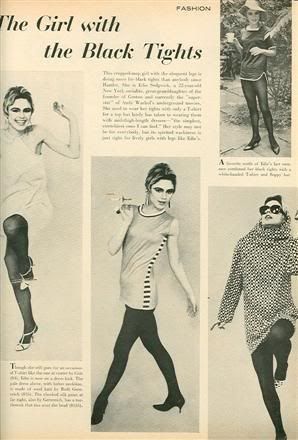
Life 1965

Many say she inspired Bob Dylan to write 'Just Like a Woman'
Friends recall Bob Dylan hanging round The Factory and inviting Edie up to Woodstock to hear him perform. He is also supposed to have written several songs for Edie, including 'Just Like A Woman' and 'Leopard Skin Pill Box Hat'. It was all too much for Warhol who, in a fit of professional jealousy, reacted by casting a new face in his next film. Edie then trumped him by signing up with Dylan. But her film with the singer was never made. This, sadly, was not her only disappointment. Although she had developed a huge crush on Dylan, he had apparently neglected to tell her he was newly married. When she learned he was not single, she was devastated.
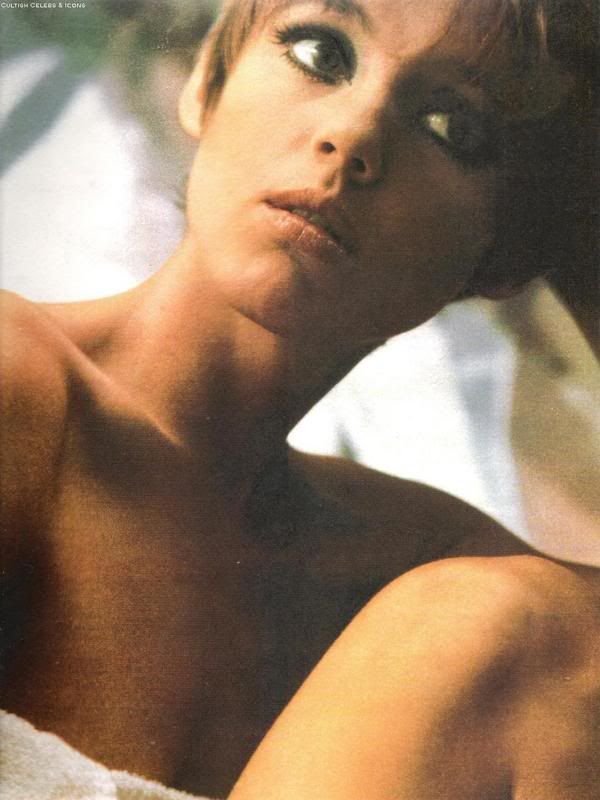
Edie Sedgwick
Bob Margouleff: "When people came back from Dr Roberts' office they looked very healthy, very happy, very into thousands of ideas that all sort of did't really go anywhere. I finally got to a place where I would see people coming into my office. This guy Billy, who became a friend of Gino's and me, he was crawling around on the floor, tyring to get the cocaine crystals or the speed crystals, or whatever he was looking for, out of the fluff in the carpet. - Photo courtesy of Terry Stevenson
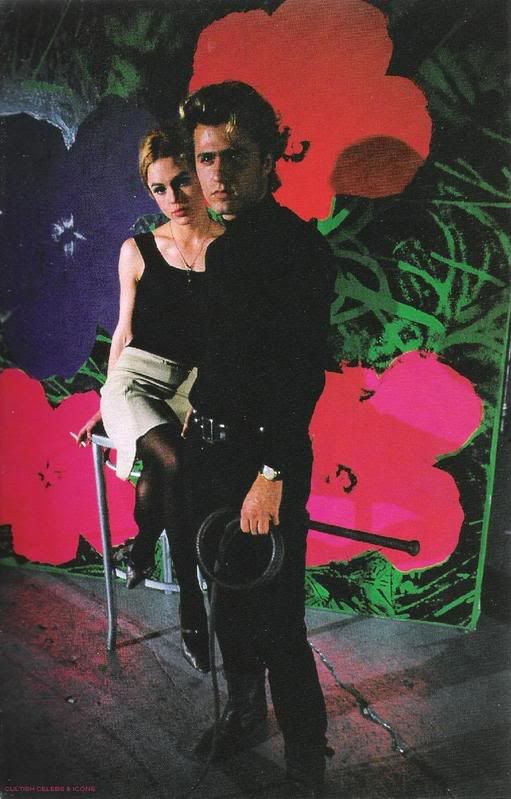
Edie with Gerard Malanga

Edie in color
There was nothing of the conventional or the predictable about Edie. She never chose the safe, secure route. She lived the sort of wild, untamed life that few of us dare to embrace. And she came to stand for something more than just herself - she embodied an era. She was, as filmmaker Joel Schumacher put it, 'the total essence of the fragmentation, the explosion, the uncertainty and the madness that we all lived through in the 1960s'. It could - and should - have all been so different.

The chain
Edie was beautiful, of course, but she wasn't, as a senior editor at Vogue once put it, 'truly a model or a movie star'. Instead, as the editor noted, she was 'an enchanting, remarkable creature of the moment'. Indeed, photographs taken of her during her brief but brilliant flit across New York's pop-art scene or Andy Warhol's films are proof of this: Edie thin, wild-eyed, with her bleached-blonde crop, her big kohl-rimmed eyes and her little-girl clothes; Edie high on drugs, speeding along the Pacific Highway; Edie and her dangly earrings, her infectious laugh and her charm.
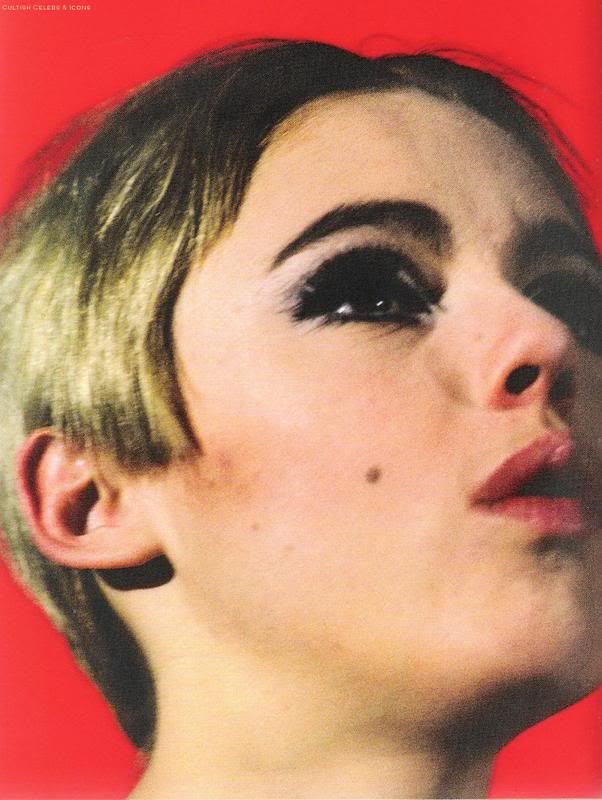
Oh, she's so fab-ul-ous
"Oh, she's do fab-ul-ous," Andy signs. "Who is she?" I ask. "Oh, that's Edie Sedgwick. She's one of the Cambridge kids. We're going to make a movie with her." At first I think it's just Andy being droll. After all, there are no women in Andy's movies. Buildings, horses, haircuts, a man sleeping for six hours, and assorted gay hi-jinks, but definitely no women. - Commentary by David Dalton; Photo courtesy of Nat Finkelstein

New York Herald Tribune's "Girl of The Year 1965"
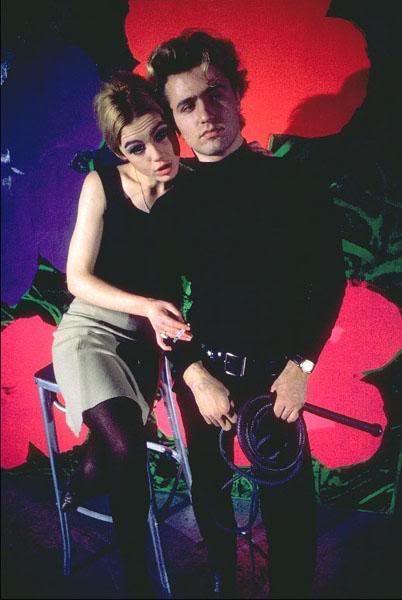
Edie & Gerard
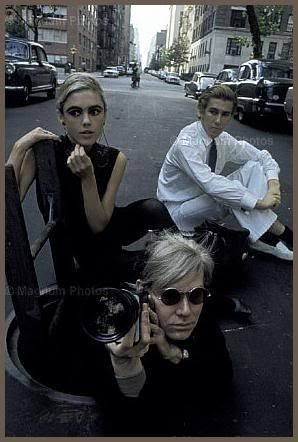
Edie, Andy Warhol & Chuck Wein / NY - 1965
In 1965, Andy Warhol spotted her dancing, doing what a friend, Chuck Wein, described as a 'sort of ballet-like rock 'n' roll' and he immediately recognised her energy, her peculiar, offbeat starry quality. The art critic Richard Dorment believes that when Warhol dubbed her a superstar it was more than just a whim. He knew what he was doing. She was 'Warhol's answer to Marilyn Monroe- Her gaiety and charm, her dumb-blonde chatter, infectious laugh and self-deprecating clowning combined sensuality with a quality very close to innocence.' And, like Monroe, she was 'frighteningly vulnerable, a borderline psychotic'. And so, fatefully, Warhol invited Edie to the Factory, his Manhattan studio, and she became the first of his superstars. - Photo by Burt Glinn
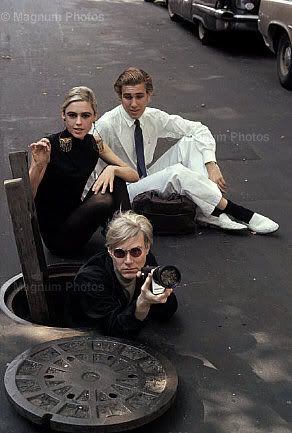
New York - 1965
Edie: "My introduction to heavy drugs came through the Factory. I was a good target for the scene. I blossomed into a healthy young drug addict. Sex and speed, wow! Like, oh God-to keep that superlative high, just on the cusp of each day-so that I'd radiate sunshine."
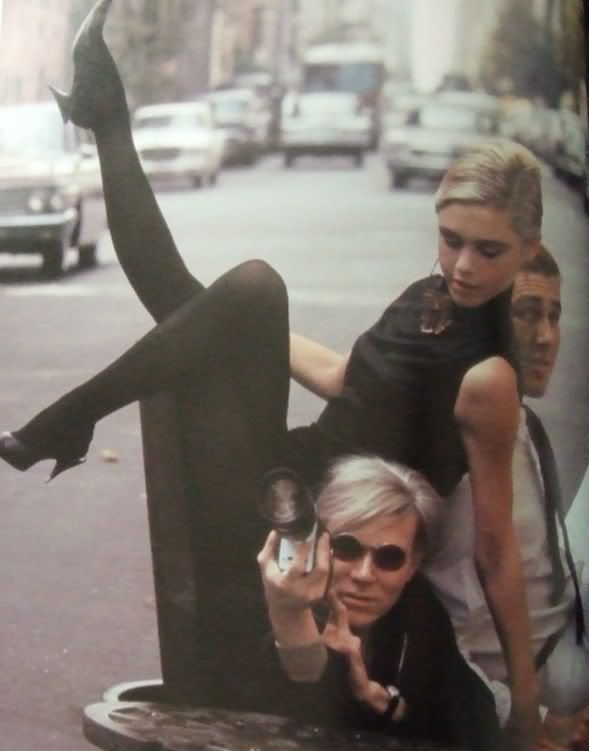
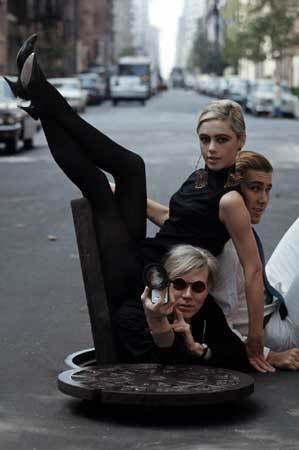
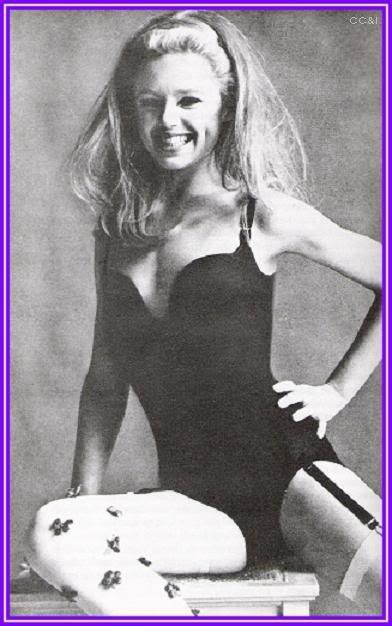
Edie in Vogue - 15 March 1966
Gloria Schiff: "We had an idea what we wanted to do with her [Edie]. I knew we wanted to put black lingerie on her and that she would be terrific; she was so blonde and pale and light. Her hair was a bit of a problem because she hadn't done very much with it. Her hair was not in what is called 'first-rate' condition. Fortunately, this charming little hairdresser called Ingrid from Kenneth's brought some hairpieces. Since the phtos were black and white, there was no problem matching the hair and the wilder and the larger the hairpieces Ingrid put on, the smaller and more beautiful Edie's face became - like a little bird's. Her eyes were black, like a snake's. She was unbelievably appealing and photogenic. We put some blush on her and lots of mascara and gloss on the lips to give them some life, and the rest was all her. She was an enchanting, remarkable creature of the moment. " - Photo courtesy of Gianni Penati
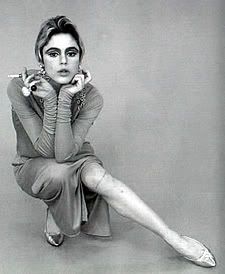
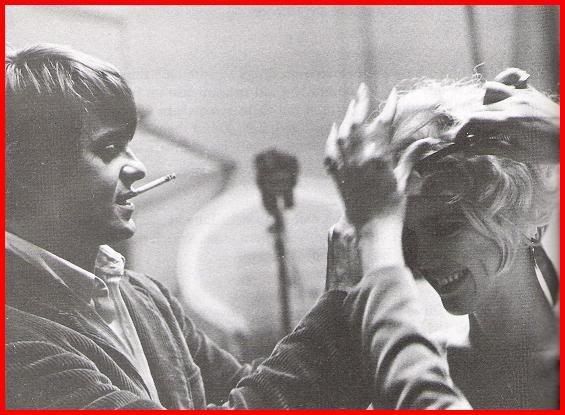
Bob Neuwirth putting the finishing touches on Edie - 1967
After Warhol made her the star of his films, according to her friend Bob Neuwirth, Edie didn't want to do any more films with him but the establishment moguls didn't think she was capable of handling big parts. There was something about her that was too intense, too fragile. 'She'd be immolated after three performances,' said writer Norman Mailer, who saw that Edie couldn't do anything without the sort of intensity that veered towards the unstable, the psychotic. 'She liked walking very close to extinction, always,' said her friend John Anthony Walker.
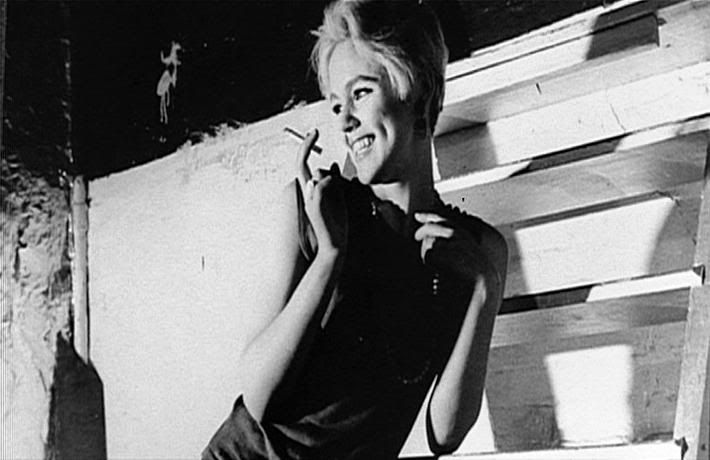
Edie Sedgwick
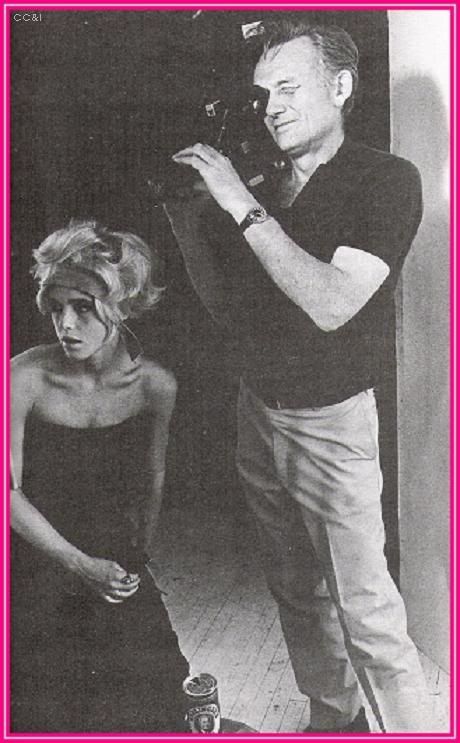
Edie with Richard Leacock - 1967
Richard Leacock: "My relationship with Edie was worshipful. I called Edie in August, 1967, and asked her to play the part of Lulu in the film sequences for Alan Berg's opera, which Sarah Caldwell of the Boston Opera Company had asked me to do. I bought Edie an airplane ticket and she arrived first-class with a bandaged bare foot and what looked like a nightgown on. She was absolutely desperate because she had been on some drug, and if she withdrew from it she would have convulsions. Everybody had to run around like crazy to get what it was she needed. Edie had never read the script, never heard of Lulu, had no idea what it was all about. I was certainly taking advantage of the fact that she was living through this." - Photo courtesy of Donald Macsorley
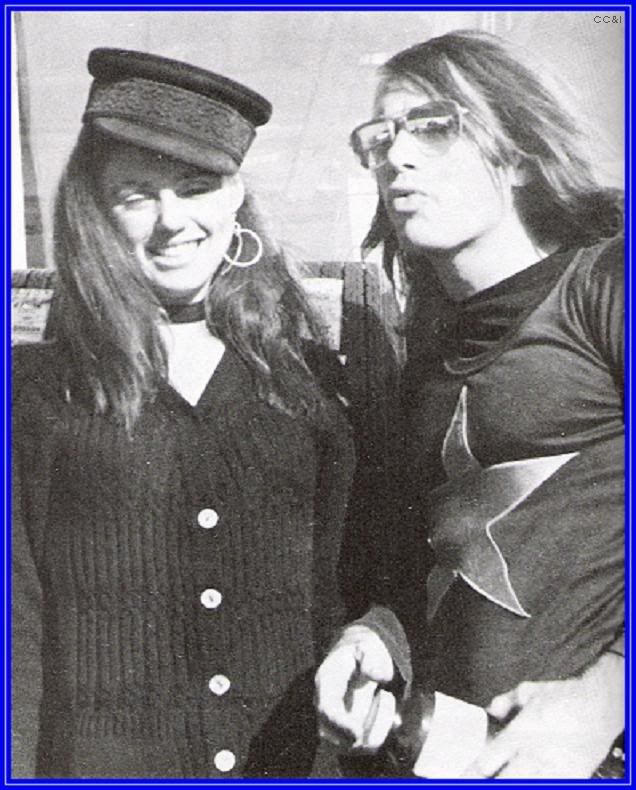
Edie with David Weisman
David Weisman: "Edie was back in Cottage Hospital the summer of 1970 when I made my first attempt to recontact her and finish 'Ciao! Manhattan'. Actually, at this point she seemed like she had really gotten a new grip on her life. That was one of her tricks: 'I've really been to the depths, but now I want to start a new life. A normal, simple life'. That was the image that Edie was projecting at that time, and I got very caught up in it. 'Okay, Edie, we're going to finish 'Ciao! Manhattan'; we're all going to do it together; it's our project; we believe in it." She finally got authorization from Dr. Mercer to finish 'Ciao!'. She was very anxious to complete it. So she got a little apartment a block from the hospital and a block from Dr. Mercer." - Photo courtesy of Eduardo Romana
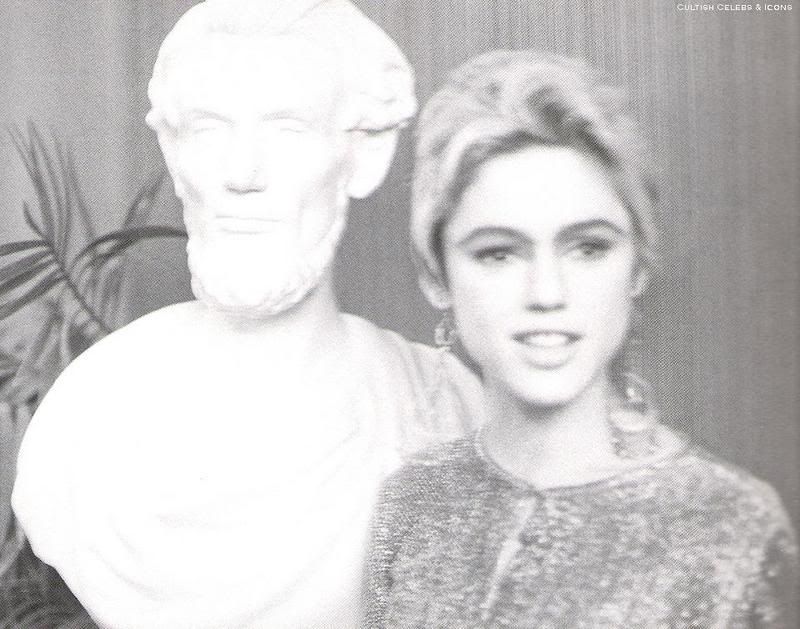
Negative Capability
"We are all doomed!" she would say blithely, but no one took this all that seriously, of course - just the apocalyptic rhetoric inherent in amphetamine. But Edie knew what she was talking about. There was incontestable proof. By the time she came to New York and met Andy Warhol there were two dead brothers lying by the side of the road, killed by a form of witchcraft that only she understood. Never at rest, "she believed that to sit around was to rot," Bob Neuwirth says of Edie, but it was far more dire than that. To stop would mean death. On to the next thing. Unfinished sentences, unfinished beads (stringing beads being a typical speedfreak activity), all to escape the turgid fatal goo of the past that stuck to her as it had to Minty and Bobby. - Photo courtesy of Nat Finklestein

Satanic Distingegration
Bibbe Hansen: "In every era, there have always been people who are illumined from within. Possessed or blessed. It might be your great aunt or the woman who had the house on the top of the hill. But unless she was an actor or a famous artist we never got to see those shooting stars. The difference between Edie and many of those unique people who've faded from memory was tht Andy was there to shine the spotlight on her and capture her. With the coming of the democratization of celebrity - which Andy predicted - many more of these unusual people will come to be known and appreciated. Edie was the first real example of that, and she quite rose to the occasion. - Photo courtesy of Nat Finklestein
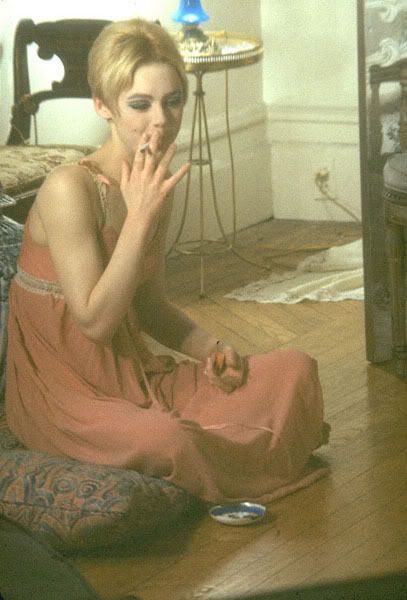
Edie sitting and smoking
Edie partied with the high-flyers and honing her extraordinary fashion sense - notably her kohl-black eyes and black stockings. At one smart dinner party, she wore a leotard rather than a dress and when everyone else was foxtrotting, she cartwheeled across the lawn. As one of her entourage observed, it was a period in which rich young people seemed to be trying to punish their parents for their rigid upbringings. Edie punished hers with a vengeance - by spending vast amounts of their money. She would order in caviar rather than cook, went round wearing a real leopard skin coat and, a herald of the terrible events that would follow, started taking LSD. She particularly liked driving while under the influence.

Edie exhales...
Although Edie was admired for her waiflike beauty and her dancing skills, Edie made a point of being totally ignorant of the wider world. She never read a newspaper unless her name was in it and carried a copy of Dickens's Tale Of Two Cities, although she never read any further than the book's famous first lines: 'It was the best of times. It was the worst of times.' Behind all the bravado, Edie was deeply unhappy. By now, two of her brothers were in mental institutions. Then one hanged himself because his father could not accept that he was gay. It was the cue for Edie to go completely off the rails. In 1964, at the age of 21, she came into a trust fund from her grandmother and moved to New York. - Photo courtesy of Nat Finklestein
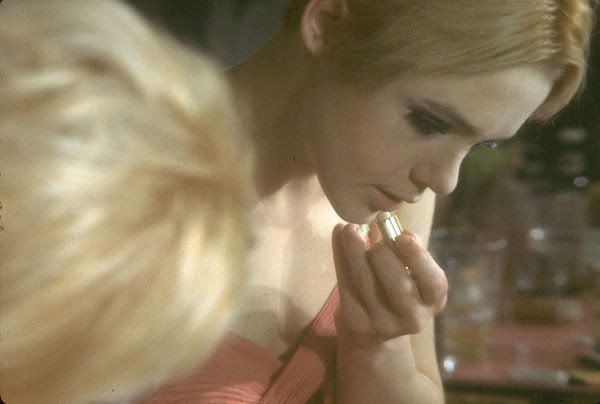
Edie applies lipstick
By 1962, she had been committed to a mental home near New York. There, her bulimia became so pronounced she soon weighed little more than six stone and had to be sent to a secure hospital. As soon as she was allowed out, she made love to the first man who came along, got pregnant and had an abortion. By now, her state of mind was so unbalanced she spent another two years in mental hospitals. - Photo courtesy of Nat Finklestein

Reflections of Edie
Edith Sedgwick, born in California in 1943, was the seventh child of this unhappy family. She was the most beautiful of the girls and complained that her father tried to abuse her by the time she was seven. She was sent, at the age of 13, to boarding school in San Francisco. Edie hated it, becoming both anorexic and bulimic. Her unpredictable father merely labelled her insane and packed her off to another school 3,000 miles away in the East. Yet she remained his favourite child. By the age of 17, she was tall, thin and wild-eyed and the only one who was allowed to drive his Mercedes sports car. This she did at top speed along the Pacific highway with the radio on full blast, wearing sunglasses and pretending she was a movie star. But what Edie liked doing best was riding her horse all alone in the woods during thunderstorms with the coyotes howling or watching the firestorms surround the ranch. It was a sinister foretaste of things to come. - Photo courtesy of Nat Finklestein
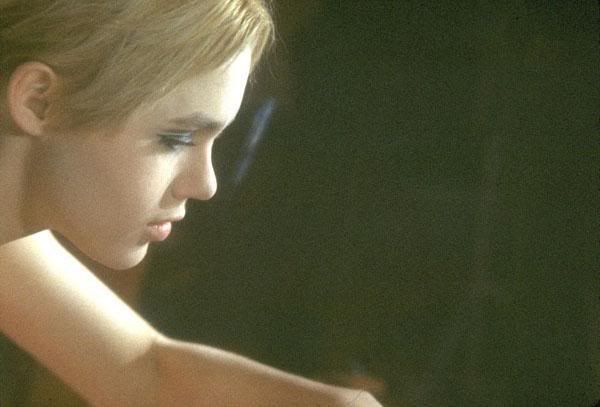
Edie's profile
Born the seventh of eight children, Edie came from a rich, traditional American family that, on the surface, seemed truly blessed. Winters were spent on Long Island and summers at a house in Santa Barbara, before they moved to a 3,000 acre cattle ranch. Growing up, Edie enjoyed an apparently carefree life with her siblings, playing cowboys and Indians, swimming and riding horses at night through moonlight. As for schools, they attended the best. But beneath the surface all was not well. Edie's father, Francis, had been thought so mentally unstable that he'd been advised never to have children. Her mother slowly retreated into a life of hypochondria and self-absorption. Edie was sent to boarding school, but soon had to be brought home. She was pitifully thin. Glandular fever, leukaemia, anorexia were all at one time thought to be to blame. But now it seems that Edie suffered from bulimia - she would eat large quantities of fastidiously chosen food, then disappear between courses to throw it all up.
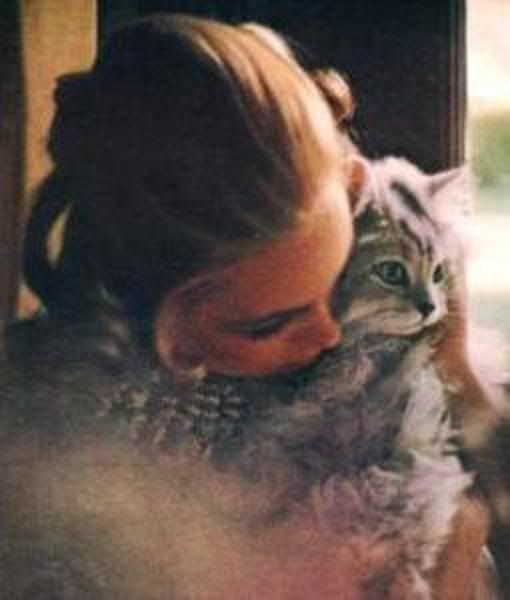
Edie with kitty
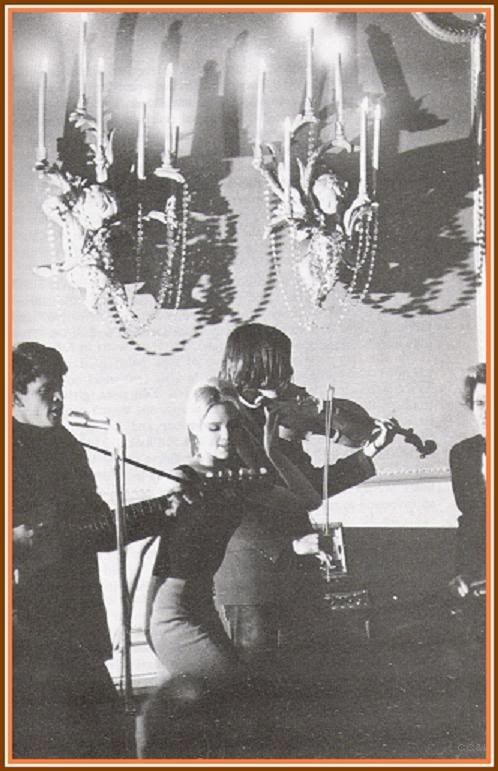
Edie performing with the Velvet Underground - 1966
Edie performs with the Velvet Underground at Delmonico's for the New York Society for Clinical Psychiatry. l-r; Lou Reed, Edie, John Cale and Gerard Malanga. Danny Fields: "She wanted to move on. She was as great in the little movies made in the Factory as anyone was in a four-million dollar movie from MGM. So Edie used to wonder: 'Should I go to Hollywood? Should I break away from Andy? Should I get a real agent?' People were going around with her. All sorts of leads. But she'd meet them and come back and say, 'Oh, God, they're such assholes! I can't work with them. I have to be with my friends. I want to be with people I love. I could never love those people. They're all stupid. Morons. Forget it.' But it was hard to get away from the Andy thing. It was so much fun; it was party time. She felt she couldn't make the transition into the real crap you have to deal with in order to make it." - Photo courtesy of Billy Name
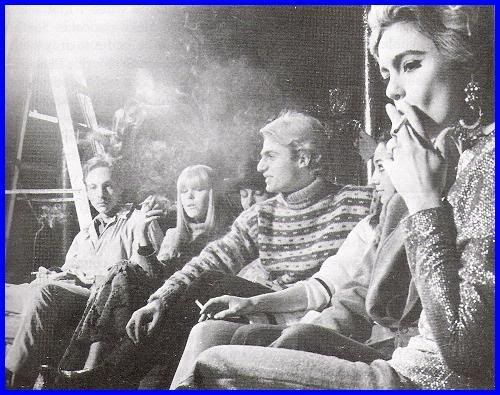
Edie at the Factory - 1964
l-r: John Palmer, Carol James, Gerard Malanga, Marisa Berenson and Edie. Jane Holzer: "It was getting very scary at the Factory. There were too many crazy people around who were stoned and using too many drugs. They had some laughing gas that everybody was sniffing. The whole thing freaked me out, and I figured it was becoming too faggy and sick and druggy. I couldn't take it. Edie had arrived, but she was very happy to put up with that sort of ambience."; Danny Fields: "Edie fit wonderfully into all this. What was great about her was that she was attracted to the most brilliant and crazy people - Ondine, Chuck and Andy. She was really a poet's lady. Most of these people were probably gay, but they were seriously in love with her. She was very beautiful, which anyone can respond to. And she made them feel like men. She would come on helpless, which brought out their strengths." - Photo courtesy of Stephen Shore

Edie dancing at the Factory with Donald Lyons - 1964
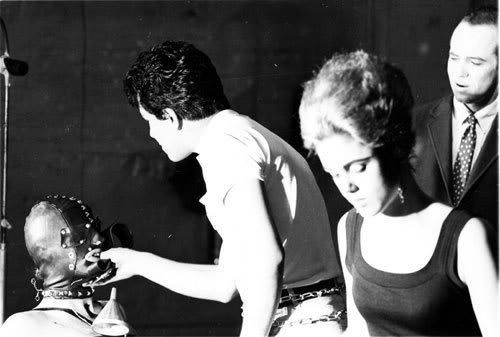
Gerard Malanga & Edie during Vinyl - 1965
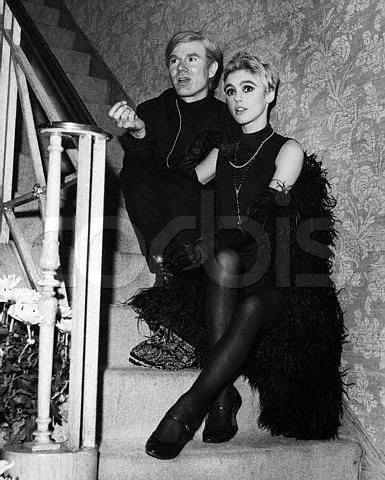
Edie and Andy

Warhol couldn't recall the first time she came to the Factory
Andy Warhol: "We never were that close, you know. It's funny. I can't even remember the first time she came up to the Factory
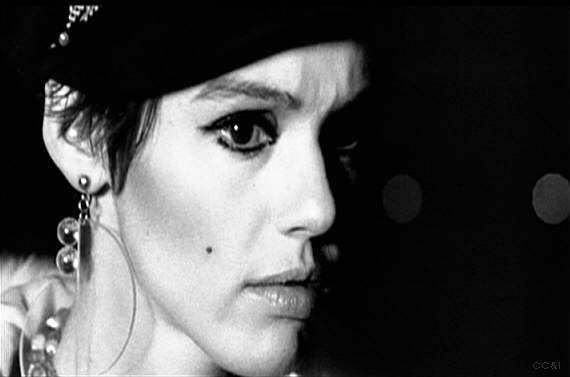
The doomed so-called "Spirit of the Sixties"
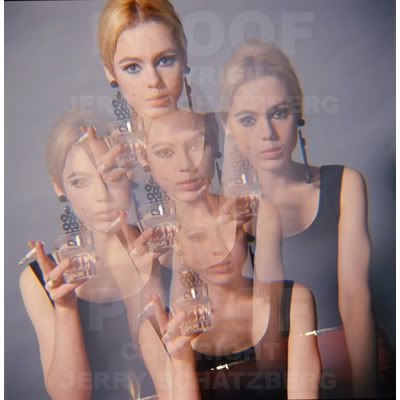
Edie

Edie

Edie andAndy

Happy Halloween
Edie wishes you a Happy Hallooween!
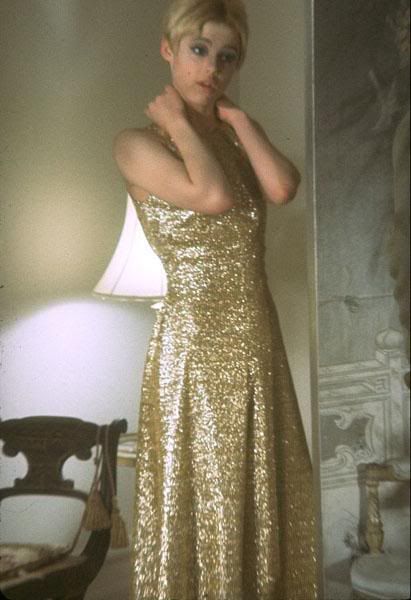
The gold dress
When Bob Dylan's interest in Edie started to grow, his friends and his manager often asked Edie how much money she was earning. Edie started to talk to factory friends and to think about her future acting potential - at one point this was raised with Warhol. Edie began to argue with Warhol about the money that she was paid to star in his films. Edie had been convinced, by Dylan's friends, that Warhol was making a substantial amount of money from his films and could afford to increase her payments. Warhol explained to her that he was not making money from the films but it did not matter, Edie had already decided that she was being undervalued and decided to leave the factory for good, telling friends that she had signed a contract with Albert Grossman, Dylan's manager. - Photo courtesy of Nat Finklestein
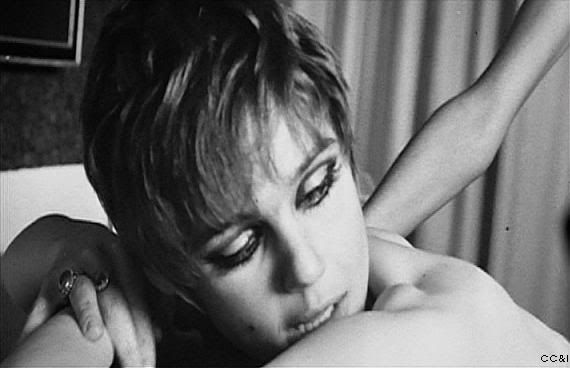
Edie Sedgwick
Edie was first institutionalized in the autumn of 1962 after suffering from anorexia and, like her brother, attended the Silver Hill mental hospital. Her anorexia continued until she weighed only ninety pounds at which time she was transferred to Bloomingdale, the Westchester Division of New York Hospital. Whereas Silver Hill was fairly liberal, Bloomingdale was very strict. Near the end of her stay there, she became pregnant while on a hospital pass and had to have an abortion.
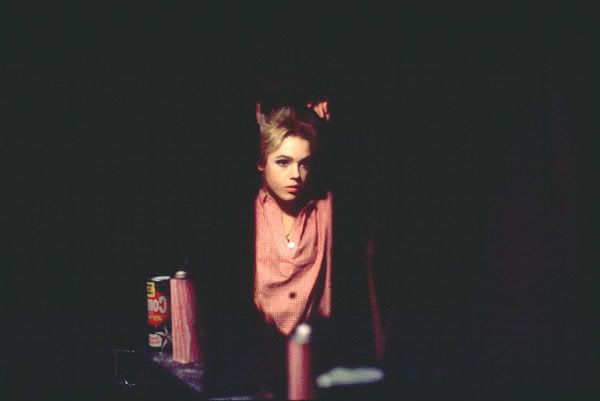
Edie wakes
Edie couldn't sleep without taking 'downers' and couldn't wake up without 'uppers', and although she was still moving in the best circles, turning up at Kennedy birthday parties, she also had some seriously sick friends. One man who became her 'maid' for a while - he later committed suicide - used to enjoy being nailed to the wall under the influence of drugs. Another would sit in New York's smartest clubs drinking glasses of urine. - Photo courtesy of Nat Finklestein
Edie in "Ciao! Manhattan"
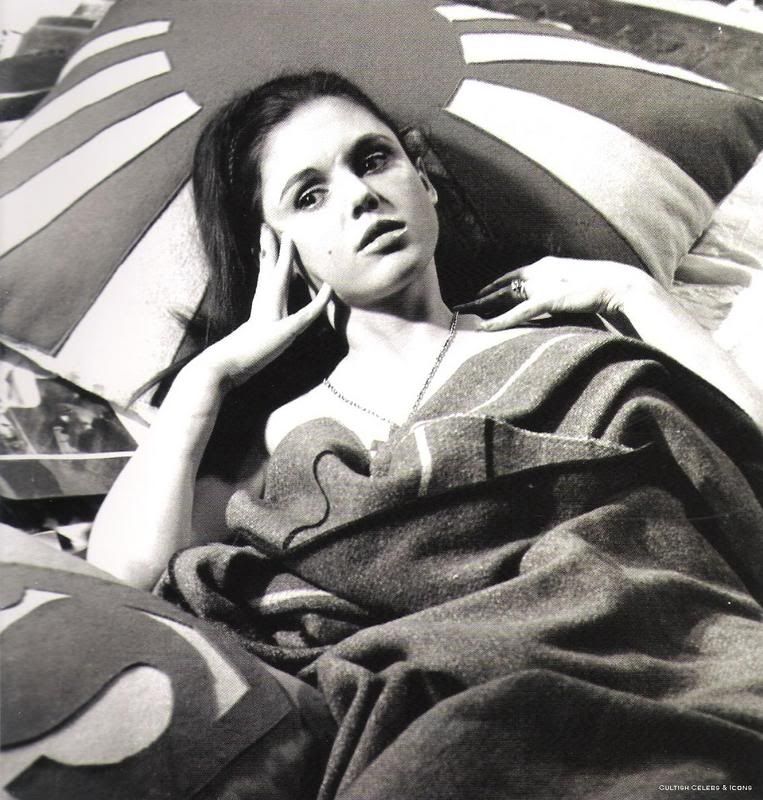
Edie in Ciao! Manhattan
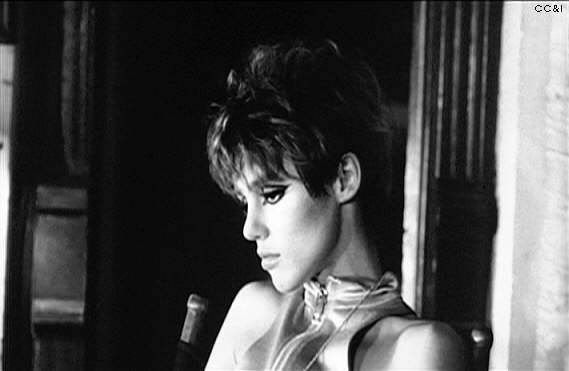
Edie Sedgwick during the making of Ciao!
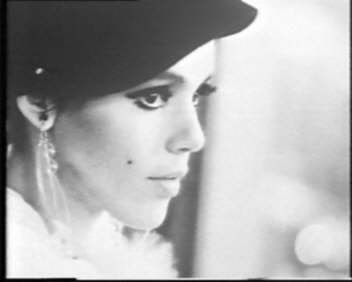
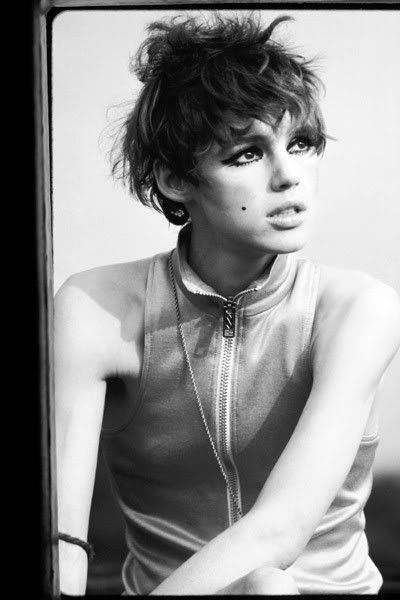
Edie - Girl on Fire
Having fallen out with Warhol, she tried modelling but was soon dropped because of her fondness for drugs - she was taking so many concoctions that she was always falling asleep with a cigarette in her hand and setting rooms on fire. Indeed, she destroyed three apartments this way - including one in New York's famously bohemian hotel, The Chelsea. Her only companion at the time, one of Bob Dylan's kittens, died in the blaze.

Edie after the Chelsea Hotel fire
Bobby Andersen: "I was hired to be Edie's nurse but quickly became her friend and companion. Her description of the fire was terrifying... how she'd awakened and the entire room was in full blaze. I believe it because I went to the hotel to rummage through the ashes to see if there was anything salvageable, and there was nothing left. Where the bed had been was a hole where it had burned through to the floor below. She had obviously been asleep in her bed and had set fire either to her bed or the rug and eventually it had all burned right through. She got up and tried to get the lock open, but she gave up and and hid in the closet. When the smoke got into the closet, she took another try at it and burned her hands on the knobs, which were white heat, and then she collapsed outside in the hall."
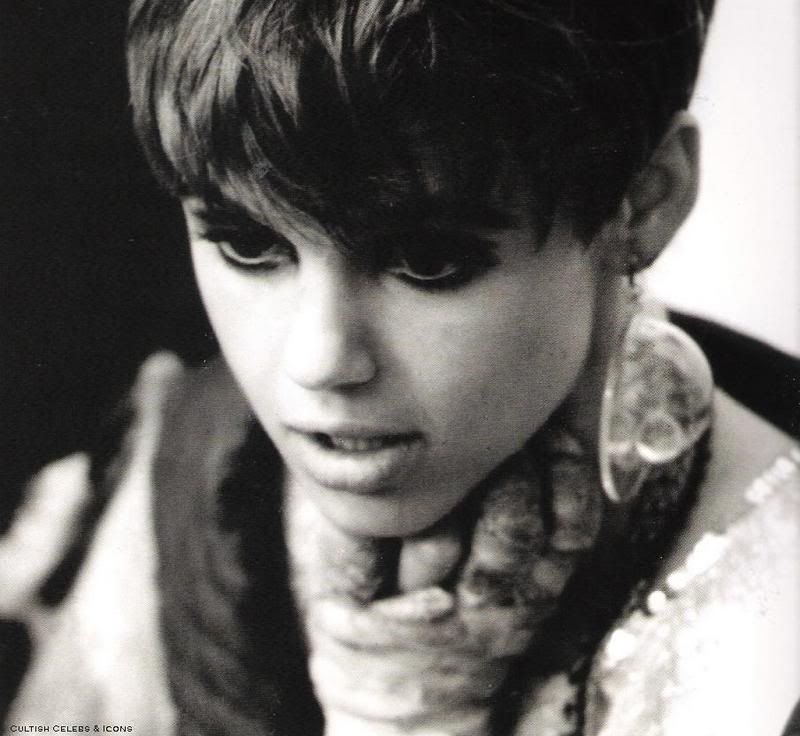
Edie with bandaged wrist from Chelsea fire
David Weisman: "I remember Genevieve Charbin phoning and waking me up. We were all living on 43rd Street in my Tudor City duplex, me, Genevieve, Chuck, Paul. Edie was living at the Chelsea. And Genevieve woke me in the middle of the night and said, 'There's a fire at the Chelsea, you gotta get down there right away.' I don't know how I got Margouleff's Porsche speedster, and he never got it back again, but I went down and rescued Edie. She was on the floor of the lobby. I remember firemen, and long hoses snaked on the floor. I remember Edie all covered with soot and curled up on the marble lobby floor, shivering, naked under blankets." - Photo courtesy of Jim Galete


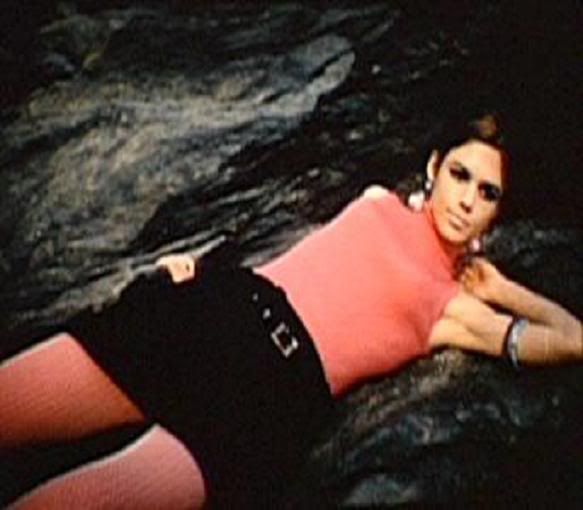
Edie Sedgwick - 1965
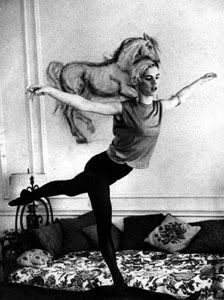
edie_vogue
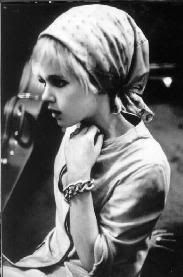
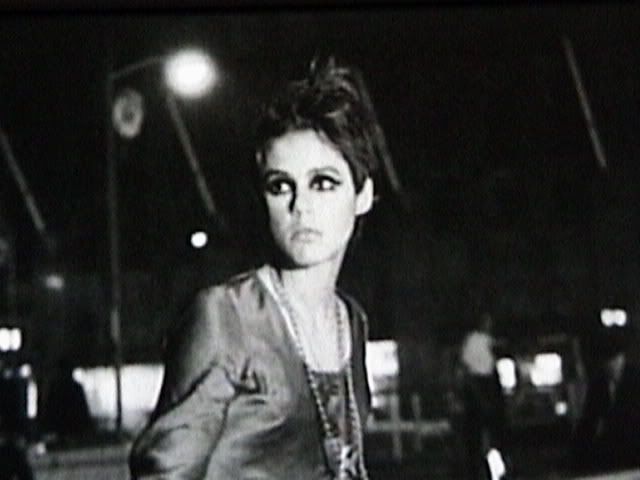
Edie by Broadway
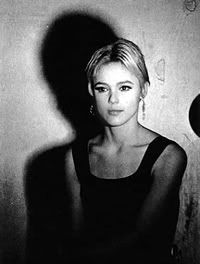

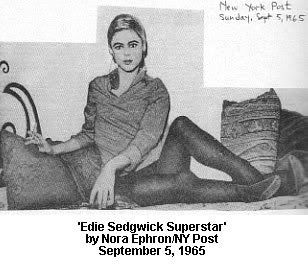
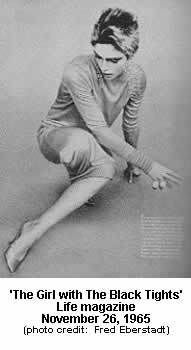
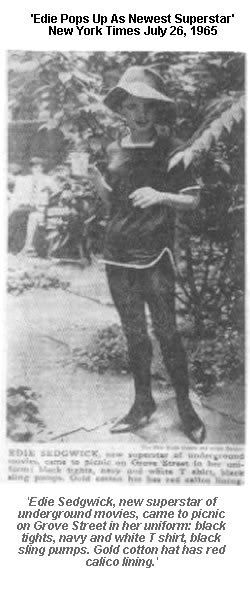


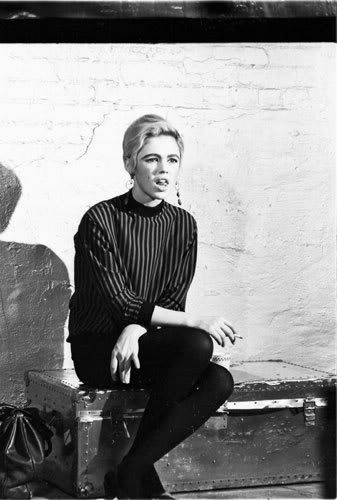
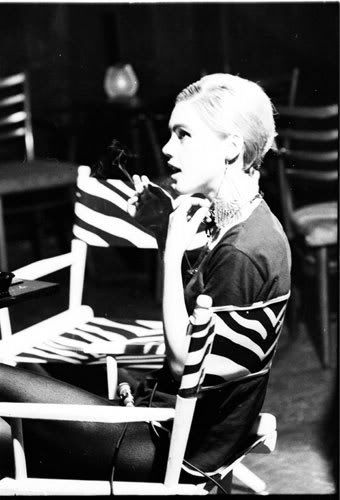
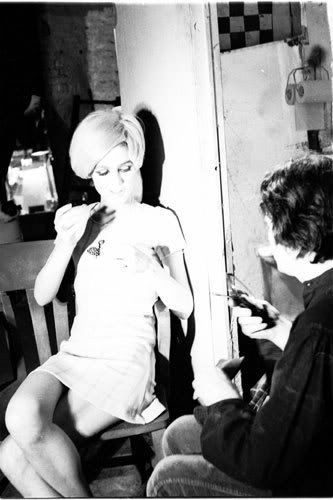
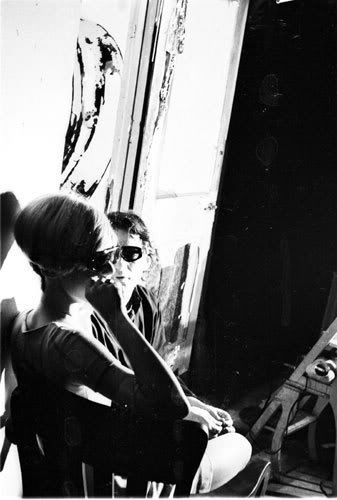
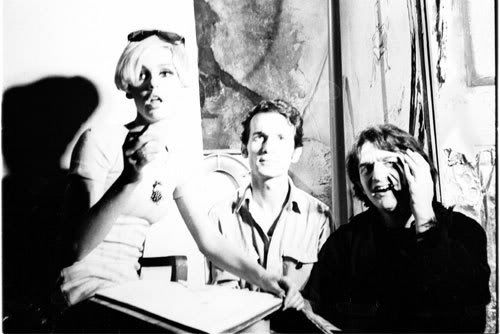
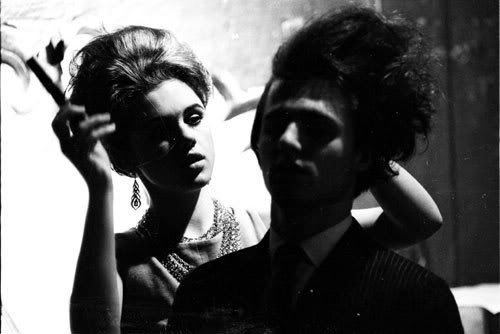
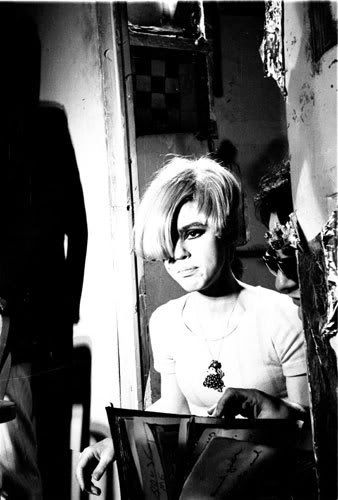
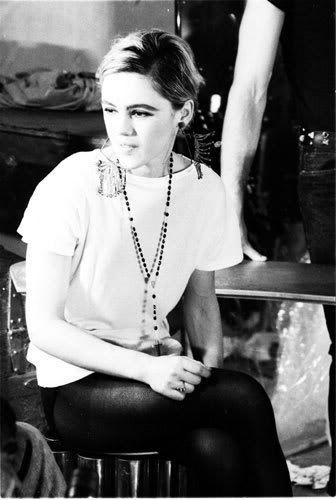
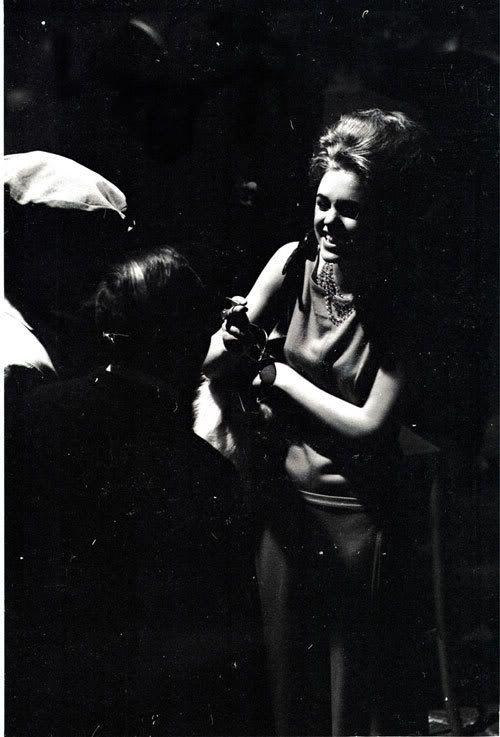
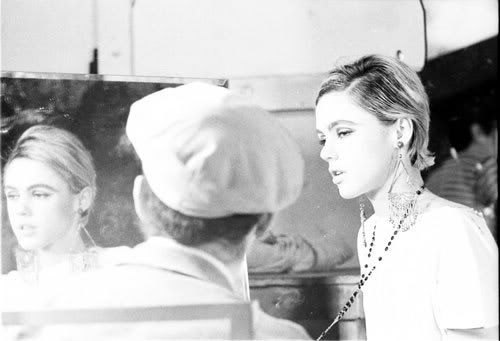
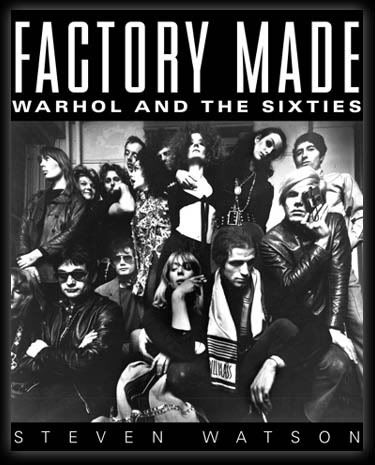
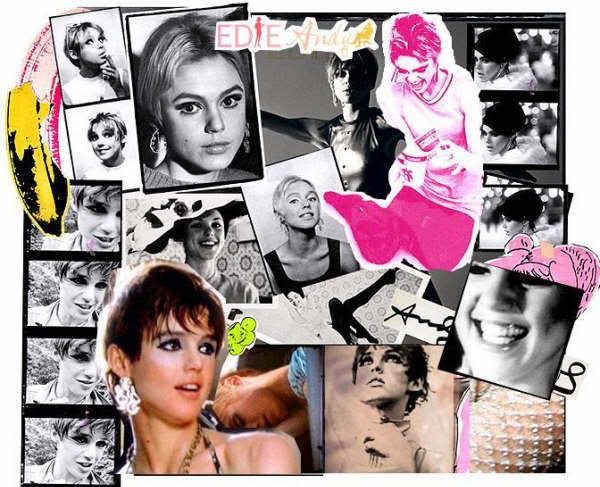
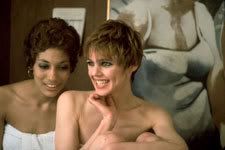

Edie, the tragic heiress
Stephen Koch: "When Edie Sedgwck started going into the outter darkness, Andy Warhol didn't try and bring her back. Or if he did, it was a pretty ineffective gesture. So that is a factor that one must weigh along the greatness, and the brilliance and the talent and all the rest. His responsibkility to these peple who came into his world. Edie Sedgwick, because she came from a socially prominent family, ended up not dyiing in the streets, exactly, but dying terribly at the age of twenty-eight. Twenty-eight!!! That's the beginning of life for most people. She looked like this bedraggled wretched has-been at the age of twenty-eight. It was horrifying. It was sickening. It was sickening at what happened to a large number of of people who were wrapped up in that dream."
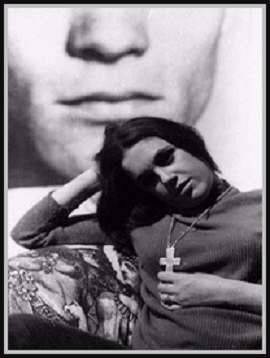
Edie bears her cross
She was just 28 years old. She was so young and it was all so long ago, and yet the vivid images of Edie and her times linger on. Something about her childlike quality and her tormented, tragic life caught the imagination not just of her own generation but of many who weren't even born when she died.